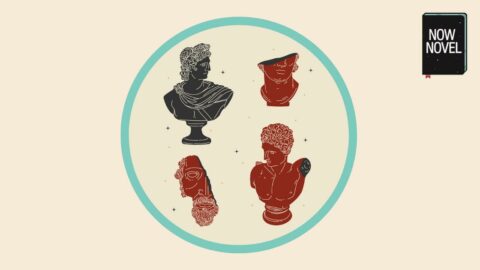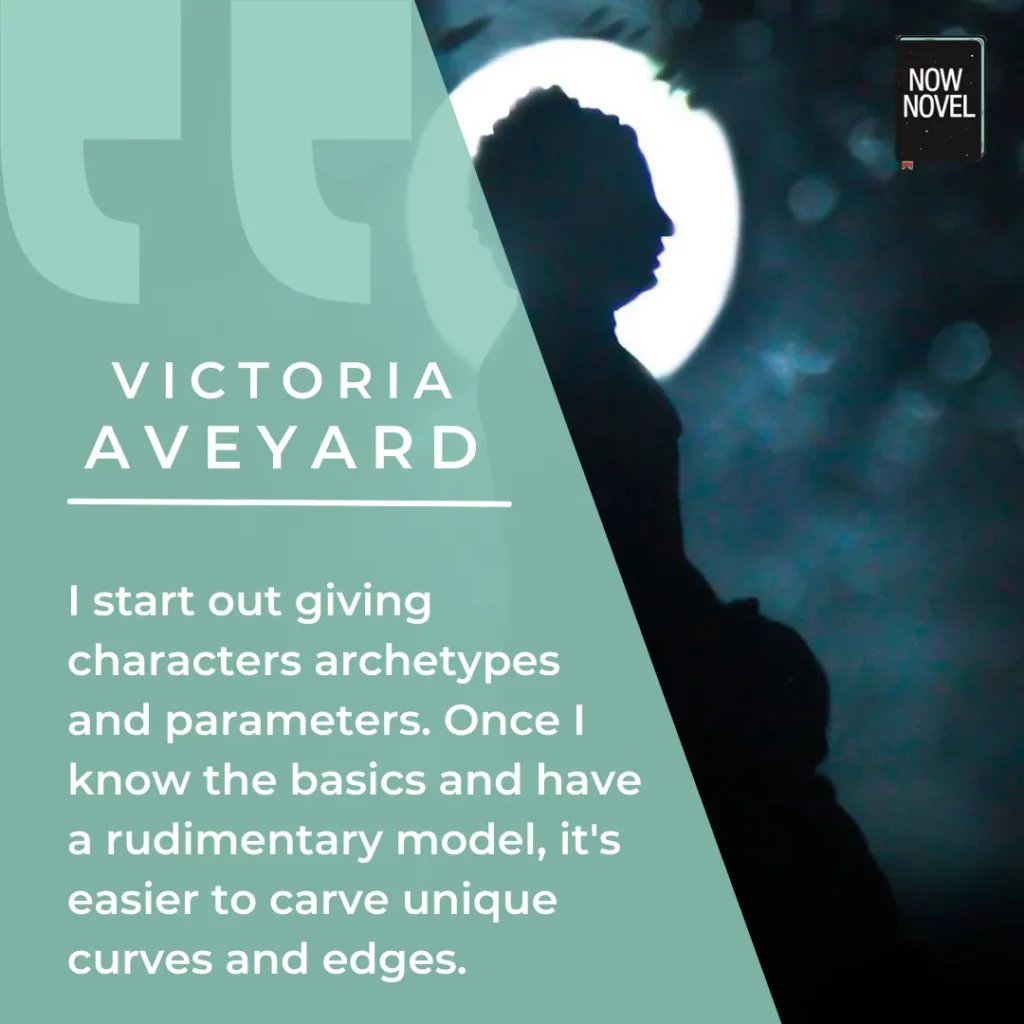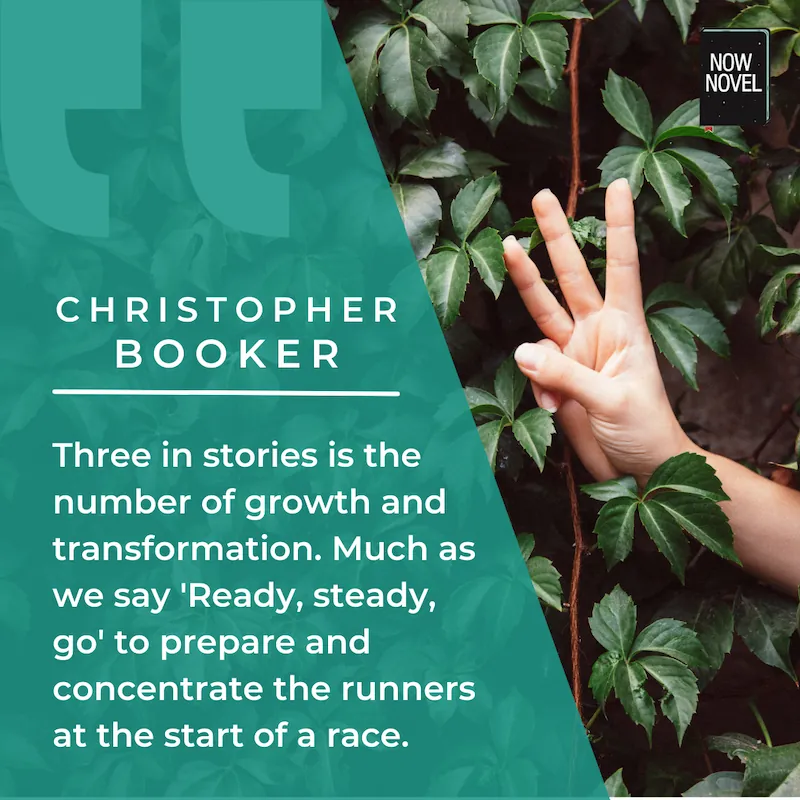Many types of stories recur across eras and cultures. Story archetypes such as ‘voyage and return’ are powerful in delivering drama, emotion, and satisfying change. Learn about the seven basic plots and ways to use familiar stories your own way:
What are story archetypes?
The word archetype refers to ‘an original that has been imitated’ (Oxford). For example, the archetype of ‘the fool’ in comedies. The wise-cracking jester (who often turns out to be the saddest person in the room) is an example of a character archetype.
Story archetypes: Form shaping content
Story archetypes are narrative forms without content that shape content choices.
For example, ‘the quest’ is an archetypal type of story. Each quest form is filled with its own content (events, characters, settings, surprises). The writer gives a quest story its own character (even if archetypal similarities to other quest stories remain).
Each story improvises on this archetypal material. The same way a jazz musician takes an old song, makes a new arrangement, and plays new melodies over old chords.
Archetypes and the work of Carl Jung
The term ‘archetype’ is also closely associated with the writings of Carl Jung.
Jung was a Swiss psychoanalyst and one of the major contributors to modern psychology.
Jung wrote extensively on the collective ideas and associations that are embedded in human thought and culture. He theorized about the stories we tell and the desires (conscious and unconscious) that drive them. He coined the term, collective unconscious, which refers to the unconscious mind and shared mental concepts.
Says Jung on archetypes:
There are as many archetypes as there are typical situations in life. Endless repetition has engraved these experiences into our psychic constitution, not in the form of images filled with content, but at first only as forms without content.
Carl Jung, ‘The Archetypes and the Collective Unconscious’, quoted by Academy of Ideas
What are the 7 main story types?
According to Christopher Booker’s book, The Seven Basic Plots: Why we tell stories (2004), the seven main types of story are:
- Overcoming the Monster. This is a story of a ‘terrifying, life-threatening, seemingly all-powerful monster who the hero must confront in a fight to the death’ (p. 22).
- Rags to Riches: A story of a ‘humble, disregarded little hero or heroine who is lifted out of the shadows to a glorious destiny’ (p. 53).
- The Quest: A story in which ‘a hero and his [or her/their] companions go through a succession of terrible, often near-fatal ordeals’. Often they receive ‘guidance from friendly helpers’ (p. 73).
- Voyage and Return: A story where an individual or group travels ‘out of their familiar, everyday, ‘normal’ surroundings into another world completely cut off from the first’ (p. 87).
- Comedy: Stories that (historically) revolved around confusions such as mistaken identities and precarious situations played for laughs, often involving a main character ‘who against all odds finally achieves the happy ending’ (p. 134).
- Tragedy: Stories that typically feature a protagonist ‘becoming more and more ensnared in their predicament’ (p. 176), often an ‘incomplete, egocentric figure who meets a lonely and violent end’ (p. 180) due to making the wrong choices.
- Rebirth: A story that ‘marks the move from one universal pole of existence to the other, from death to life’ (p. 205) in showing how a character moves from an imprisoned or trapped state to freedom and renewal.
Sharp-eyed critics might say that comedy and tragedy are not really plots. You could simplify the difference, as Booker does to an extent, to ‘comedy ends happily’ while ‘tragedy ends in misfortune’.
Nonetheless the story archetypes Booker discusses with examples in his 728-page study show that story archetypes do recur.
Societies have shared many spaces, religions, myths and conflicts, so it makes sense that there is plenty of overlap.
Develop your Story with a Mentor
Every quest needs an insightful mentor – find a writing guide.
Learn MoreWhy story archetypes are helpful (plus their cons)
Story or common archetypes are helpful for your own writing process as they offer:
- Ideas and conceptual starting points for characters, narrative arcs and turning points
- Story structure around which to plan rising and falling action
- A means to recycle elements of popular myths and folktales that have proven great power to endure
The cons of using story archetypes in your planning or drafting process:
- Types may feel reductive or restrictive (if your story has the plot arcs of Cinderella but is set in space, critics might still describe it reductively as a ‘Cinderella story’).
- It’s easy to focus on what theories say a story typically does or should do rather than find a way that works for you that may buck trends and norms
How to use the seven story types to plot and find ideas
Story archetypes provide a tool to find ideas and develop characters. Ways to use them:
- Use story archetypes to define limits
- Use types as a story springboard
- Use plot types to plan important changes
- Find character archetypes within story types
- Borrow arcs to ensure payoffs
- Combine types to explore stories’ potential
- Subvert types of stories to make them your own
Let’s explore these creative ways to use story patterns further:
Use story archetypes to define limits
Story archetypes are useful for establishing useful parameters.
Say you decide your story will be a ‘rags to riches’ story, for example.
This decision gives your story an inherent story arc: Someone will progress from relative poverty (whether spiritually or materially) to riches (real or metaphorical).
The very general form of the archetype gives a surprisingly large amount to work with.
You have a why and possibly who that arises from this. Why does your character’s fortune change? Who (or what) is responsible?
The second question is part of a major plot twist in Charles Dickens’ beloved classic Great Expectations, where the hero’s mysterious benefactor turns out not to be who the reader might assume it to be.
The rags to riches story type shows that simply having a dramatically different ‘before and after’ situation is all you need to build a story.
It is worth saying that story archetypes or the six basic story types, are often identified by critics after a work is written rather than a conscious part of the creative writing process. Yet thinking about them may help you give your story intentional shape.

Use types as a story springboard
Many story archetypes tend to go along with specific characters or character archetypes and even plot scenarios.
Take the first of Booker’s seven basic plot types: ‘Overcoming the Monster’. This is a staple of many a dystopian sci-fi or horror novel.
Booker writes of how we often encounter these types in the darker fairytales of childhood. Think ‘wolves who eat grannies and disguise themselves in their clothing’. Or cannibal witches with houses made of gingerbread.
Booker uses the Biblical story of David versus Goliath story arc as an example of an ‘Overcoming the Monster’ story where the monster is monstrous, but not necessarily tentacled or supernatural – merely gifted with extremely unfair-seeming advantage.
The similarities between Goliath and a witch in a gingerbread house are:
- Being an almost unfairly powerful opponent or antagonist
- Working outside of the established norms or rules (a ‘fair’ opponent would be one’s own size, for example, unlike the giant Goliath, or would not have supernatural or magical powers if one did not)
These broad, general archetypal ideas supply a springboard for a story idea.
In a story of overcoming, how will your monster buck norms, break rules (think of how sirens and snakes tempt, lead astray).
What makes a monster dangerous, tempting, or both?
Use plot types to plan important changes
One thing a story archetype or form without content gives you is key moments of change.
In The Seven Basic Plots, Booker gives some examples of key moments in a typical quest story:
- The Call: An urgent compulsion to set out on an adventure and answer ‘the call’ or ‘the call to adventure’ (such as being saddled with a critical quest).
- Meeting with the hero’s companions: For example, how and where Frodo finds companions in his travels to Mordor to destroy the One Ring in The Lord of the Rings, or how Hazel in Watership Down, the leader of a fluffle (that’s the actual word) of rabbits, is accompanied by other rabbits with individual strengths.
- The journey: The portion of the quest during which characters go through ‘terrible, often near-fatal ordeals’ (Booker, p. 73).
- Temptations: The hero may be tempted while pursuing their quest to stray off course (Arthurian knights are tempted by crones disguised as beautiful women, for example, or Odysseus is tempted to leap overboard while at sea by the sirens’ song in Homer’s Odyssey).
- Meeting helpers: Heroes in quests often encounter helpers who give them special and crucial aid. For example, in The Lion, the Witch and the Wardrobe, the Pevensie children meet a talking faun and beavers who help them understand the land of Narnia and its dangers.
The bolded key events above provide beats you can plan in your own quest story.
Where will your characters find help, and where might temptations or false trails threaten their safety or success?
Use what you know of similar archetypal stories to find ideas for pivotal turning points.
Find character archetypes within story types
Story archetypes are useful for finding character types that ring true.
For example, the appearance of a helper in a quest makes sense for this story type because few people accomplish great things (or defeat vastly overpowered opponents) without help along the way.
In a quest, for example, mentors, guardians and advisors, like writing coaches, know a thing or two about the terrain and may offer valuable advice, practical feedback and simple encouragement when morale is low.
Watch more on types, archetypes and stereotypes in this extract from our monthly writing webinars:
Example of character archetypes within story archetypes: Rebirth narratives
In a story of rebirth, a character typically falls under the control of a ‘dark power’ as Booker calls it. This is what necessitates rebirth.
Here are a few examples of characters in difficult situations and the ‘dark power’ that could stand between them and their victory:
- A person battling with addiction – their pusher/enabler/supplier
- A person battling chronic illness – their condition
- Someone who wants to become a movie star – the voice telling them they’re not good enough
Understanding what the ‘dark power’ is in a rebirth story – even if its not a character but a condition or supernatural force – helps you understand what obstacles your main character will face.
You can then begin to imagine how your characters will overcome to emerge triumphant.
Read our post for detailed look at types of character archetypes.
Borrow arcs to ensure payoffs
What makes a good story? One essential ingredient is an emotional payoff.
Part of why readers love feel-good romance, for example, is that they know there will be the glow of found love.
Story archetypes such as ‘voyage and return’ provide defined changes or story arcs. For example, the simple story structure ‘ABA’ of voyage and return.
In the case of this story archetype, what gives voyage and return emotional payoff? Some elements include:
- The immense sense of obstacle: Not only is Odysseus detained on an island by a sorceress in Homer’s Odyssey, he goes through many other trials from cyclops attacks to interfering sea-gods
- The profound changes of journeys: Because so much time has passed while Odysseus has been trying to get home, his own wife does not immediately recognize him when he returns as he has aged dramatically
An archetypal story such as ‘Rags to Riches’ or ‘Voyage and Return’ has dramatic change at its heart. Borrowing the structural element – a low to a high, or a high to a low then a high again – will give your story a fundamental ingredient: Meaningful change.
Combine types to explore stories’ potential
Story archetypes may seem like rigid templates that have to hit certain story beats.
For example, there has to be the call to adventure in a quest story (the hero doesn’t just say, ‘I wonder what will happen if I trek to Mordor and throw this ring into a volcano?’)
At the same time, you could combine elements from different archetypes to make your story more interesting.
Say you were writing a modern telling of Cinderella. What if you made the outcome tragic for Cinderella? What if the prince turned out to be a controlling monster? Rags to riches wouldn’t end at riches, but would rather morph into ‘overcoming the monster’, perhaps.
This is where playfulness and asking ‘what if’ has so much value in storytelling. What can you combine, reinvent, retell with your own exciting twist?
Subvert types of stories to make them your own
Story archetypes are ‘received’ wisdom and ideas. Subverting them (meaning to turn them on their head, rewrite them) is inherently political. Saying ‘not this’ (to the idea that, for example, the girl raised in the woods must by default long for the castle on the hill) is one way to find new ideas.
What if you rewrote Cinderella with Cinderella as the princess, the prince now the underdog? What happens when you invert roles (gendered or otherwise) or subvert traditional ideas and story tropes?
There are many ‘Overcoming the Monster’ stories where the protagonist is the monster (or discovers they are) for example. For example, Dennis Lehane’s Shutter Island (in which the protagonist realizes late in the story he was guilty of a terrible crime).
Use quest (adventure stories), voyage and return, rags to riches, or riches to rags (tragedy) a thriller story and other story archetypes as starting points. Subvert what isn’t useful to you, if your genre allows this degree of going ‘off-script’. Most of all, play with archetypes and have fun with them as a tool for creative storytelling.
What’s one of your favorite story archetypes? Tell us in the comments or share your questions on this subject.
Get help developing a story with practical guidance and writing tools to ensure you finish.

Get new writing ideas weekly
Subscribe to our writing craft newsletter for writing videos, articles and helpful guides.




3 replies on “Types of stories: 7 story archetypes (and ways to use them)”
I will share this wonderful post with my creative writing group. I think it will inspire and direct their energies. And it’s a feast for thought! Thank you.
Hi Heather, thank you so much for sharing your feedback. I hope your writing group finds it useful!
[…] https://www.nownovel.com/blog/types-of-stories-archetypes/ […]